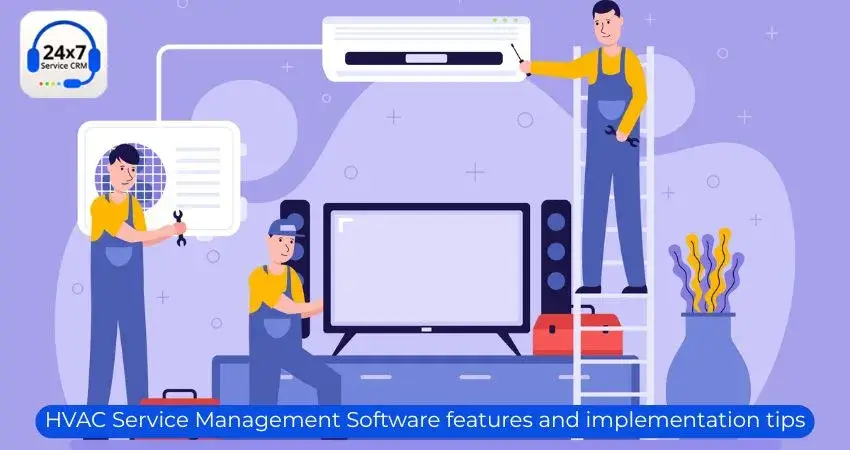
Jul 02, 2025
Effective operations and top-notch customer service are essential for preserving a competitive edge in the fast-paced HVAC sector of today. HVAC Service Management Software Service CRM is designed to streamline field operations, real-time tracking, improve communication, automate routine tasks, and enhance overall business performance. Whether you're a small HVAC business or a large-scale contractor, implementing the right software can significantly transform your workflow. This tutorial describes how to successfully integrate HVAC service management software, Service CRM, in your company and what features to look for.
One of the most critical aspects of HVAC service is efficient scheduling and dispatching. Robust HVAC software Service CRM should allow for:
This helps ensure that the right technician is sent to the right job at the right time, reducing delays and improving customer satisfaction.
Handling work orders by hand can be laborious and error-prone. HVAC software Service CRM automates the process by:
This helps improve workflow transparency and accountability.
Mobile functionality allows field technicians to access job details, customer information, checklists, and inventory while on the move. Top features often include:
These result in increased output and fewer mistakes in the field.
Built-in CRM software helps you maintain detailed customer profiles, including:
This ensures a more personalized service experience and improves customer retention.
Efficient billing is critical for cash flow. HVAC software Service CRM should offer:
By automating these procedures, billing errors are reduced and money collection is accelerated.
Track spare parts, tools, and equipment across multiple job sites with features like:
This enhances cost control, minimizes waste, and prevents stockouts.
To make informed business decisions, HVAC software Service CRM should offer:
Access to real-time insights allows you to optimize HVAC operations and spot growth opportunities.
The best HVAC software Service CRM integrates seamlessly with other business tools such as:
This ensures smoother data flow and reduces manual data entry across systems.
Before choosing a platform, evaluate your HVAC business operations. Consider:
Identifying your pain points will help you select an HVAC Service Software that aligns with your specific business needs.
Select a vendor with a proven track record in the HVAC industry. Key criteria should include:
Request demos, read reviews, and consult with other HVAC business owners before committing.
Implementation should be phased rather than rushed. Create a rollout plan that includes:
Proper planning minimizes disruption and ensures a smoother transition.
Training is crucial for successful adoption. Ensure that both office staff and HVAC field technicians understand how to use the system. Our AC Service Management Software offers:
During this phase, soliciting feedback might aid in locating and fixing usability problems.
Before going live, conduct a pilot test with a small team or on a specific service type. Use this opportunity to:
This prevents system-wide issues and builds confidence in the new system.
After implementation, continuously monitor performance. Track metrics such as:
Use this data to optimize workflows, improve customer service, and identify new areas for automation.
HVAC Service Management Software Service CRM is a powerful tool that can help streamline business operations, improve team productivity, enhance customer satisfaction, and more. From scheduling and dispatching to invoicing and analytics, choosing the right Air Conditioning Service Software and implementing it properly can have a significant impact on your business's bottom line. By focusing on your business operational needs and following a structured implementation plan, you can ensure long-term HVAC business success and scalability in a competitive market.
Best Air Conditioning Repair and Service Management Software for 2025
How AC Service Software Can Boost Technician Productivity and Customer Satisfaction?